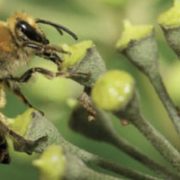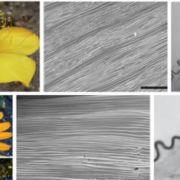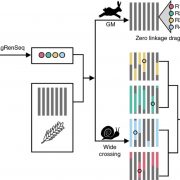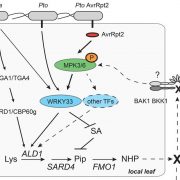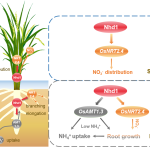Fungal exopolysaccharide regulates plant-microbe interaction (Plant Cell)
 The studies on the apoplastic interactions of plants and fungi often focus on the fungal cell-wall, but recent studies indicate various plant colonizing fungi also have an exopolysaccharide (EPS) layer outside their cell wall. Chandrasekar et al. observed that the composition of this fungal EPS is distinct from the fungal cell wall and the secreted culture filtrate, indicating it is neither just an extension of the cell wall nor something simply secreted out into the medium. The activity of a barley glucanase (which is secreted in response to fungal treatment) on the EPS that is secreted by endophytic or pathogenic fungi leads to the release of a β-glucan decasaccharide (β-GD). Interestingly application of β-GD to barley or Arabidopsis suppresses the immune-responsive ROS burst triggered by other elicitors of immunity, but it does not affect other early immune responses. In vitro studies indicate β-GD can scavenge ROS indicating it might be quenching apoplastic ROS that is secreted by plants during plant-microbe interactions. Co-treatment of plants with β-GD and endophytic fungi leads to higher fungal colonization. Overall, this article indicates fungi have evolved to utilize a plant defense-related enzyme to subvert plant immunity. Summary by Kamal Kumar Malukani, @KamalMalukani. Plant Cell 10.1093/plcell/koac114
The studies on the apoplastic interactions of plants and fungi often focus on the fungal cell-wall, but recent studies indicate various plant colonizing fungi also have an exopolysaccharide (EPS) layer outside their cell wall. Chandrasekar et al. observed that the composition of this fungal EPS is distinct from the fungal cell wall and the secreted culture filtrate, indicating it is neither just an extension of the cell wall nor something simply secreted out into the medium. The activity of a barley glucanase (which is secreted in response to fungal treatment) on the EPS that is secreted by endophytic or pathogenic fungi leads to the release of a β-glucan decasaccharide (β-GD). Interestingly application of β-GD to barley or Arabidopsis suppresses the immune-responsive ROS burst triggered by other elicitors of immunity, but it does not affect other early immune responses. In vitro studies indicate β-GD can scavenge ROS indicating it might be quenching apoplastic ROS that is secreted by plants during plant-microbe interactions. Co-treatment of plants with β-GD and endophytic fungi leads to higher fungal colonization. Overall, this article indicates fungi have evolved to utilize a plant defense-related enzyme to subvert plant immunity. Summary by Kamal Kumar Malukani, @KamalMalukani. Plant Cell 10.1093/plcell/koac114


